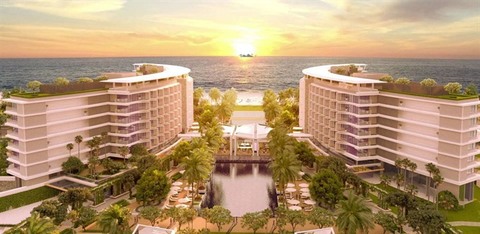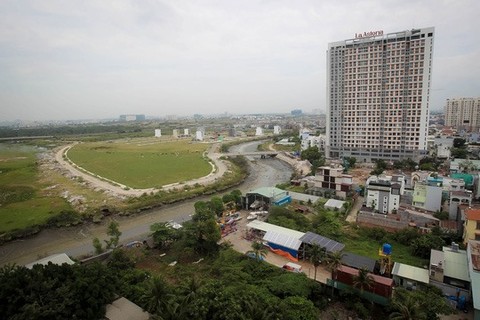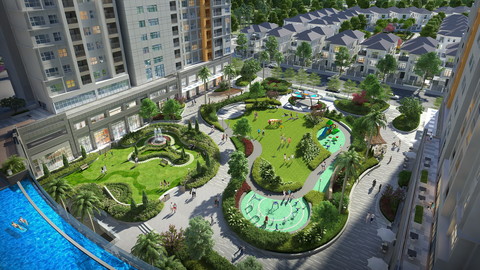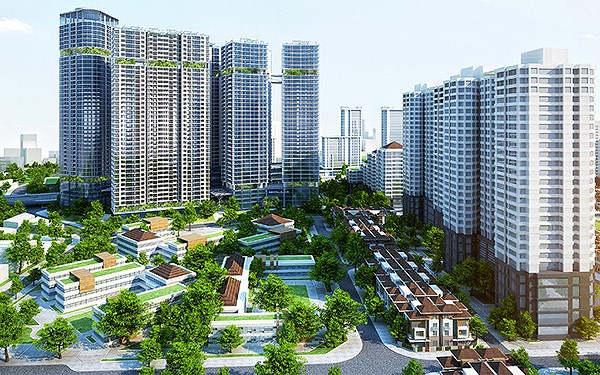VN condotel market promises to boom this year
VN condotel market promises to boom this year
Condotels are becoming a hot development target in the real estate market, as international tourists flock to Viet Nam with increasing speed. Condominiums that are operated as hotels, with owners allowed to make their units available for short-term rentals, the properties are attractive for tourists and business visitors.

The condotel market is forecast to keep booming in 2018. But the rapid development has left many concerned about oversupply.
Supply exceeding demand?
According to data from the Viet Nam Real Estate Association (VNREA), in 2017 condotels became the brightest star in the resort real estate sector. The investment in condotel projects has accounted for more than half of total inflows into the real estate market. The supply of condotel products hit 22,837 units across developments throughout the country. Successful transactions account for 65-70 per cent of the volume offered.
The above numbers show the excitement focused on this segment of the real estate as well as the potential for investors. This year, it is forecast that there will be 29,000-33,000 condotel units available for sale.
Stephen Wyatt, CEO of global real estate services firm JLL Viet Nam, said the development of this type of resort condominium is in direct proportion to the accommodation needs of tourists. As tourists’ demand grows, this type of asset has a positive future.
The Viet Nam National Administration of Tourism reported that international visitors to Viet Nam in 2017 reached nearly 13 million, a sharp increase of 29.1 per cent over the previous year. The most attractive tourist destinations include HCM City, Ha Noi, Da Nang, Nha Trang and Phu Quoc.
In addition, according to the Law on Tourism 2017 approved by the National Assembly, the Government expects the tourism industry to develop into a key economic sector in the future. Supporting policies and investment incentives will create momentum for resort real estate.
In addition, Viet Nam’s hosting of regional and international conferences also contributes to the development of tourism. For example, hosting APEC 2017 in Da Nang City led the city to perfect its tourism infrastructure as well as attract the attention of visitors and investors from around the world.
With this foundation, 2018 is expected to be another exciting year for resort real estate as investors simultaneously introduce their projects to capture the wave of development of Viet Nam’s tourism industry, Wyatt said to baotintuc.vn.
As for the question of whether condotel developments have crossed the threshold into oversupply, Wyatt said the answer was uncertain and depends on the overall future of the tourism industry. And at the moment, tourism was a promising sector thanks to the Government’s commitments to playing a supportive role.
It is necessary to focus on quality, business strategy and commitment to profitability in order to adapt to the growing market and increasingly tight legal framework of this market, Wyatt suggested.
Need a plan
According to Wyatt, there are three main reasons this type of vacation apartment attracts investors.
First, resort condominiums hit the investment market within the last three years, so the competitiveness of this sector is still low compared to other markets such as apartments, townhouses, villas and land plots. In addition, this type of real estate is attractive to investors because developers typically promise that investors will receive a certain amount of profits.
Second, like other types of real estate for sale, this type of product offers a rapid return on investment.
Third, the 2017 Tourism Law identifying tourism as a key economic sector in the future will create momentum for the development of resort real estate.
However, many management agencies and experts say the condotel boom demands strategy and planning.
Nguyen Tran Nam, chairman of VNREA, emphasised that it was necessary to have a soft, flexible plan for condotel development and investment.
The planning should be based on demand and must be designed to create demand. Some localities report they have experienced dramatic increases in tourism after a condotel is built. Quy Nhon City in the central coast province of Binh Dinh is one example, Nam said.























